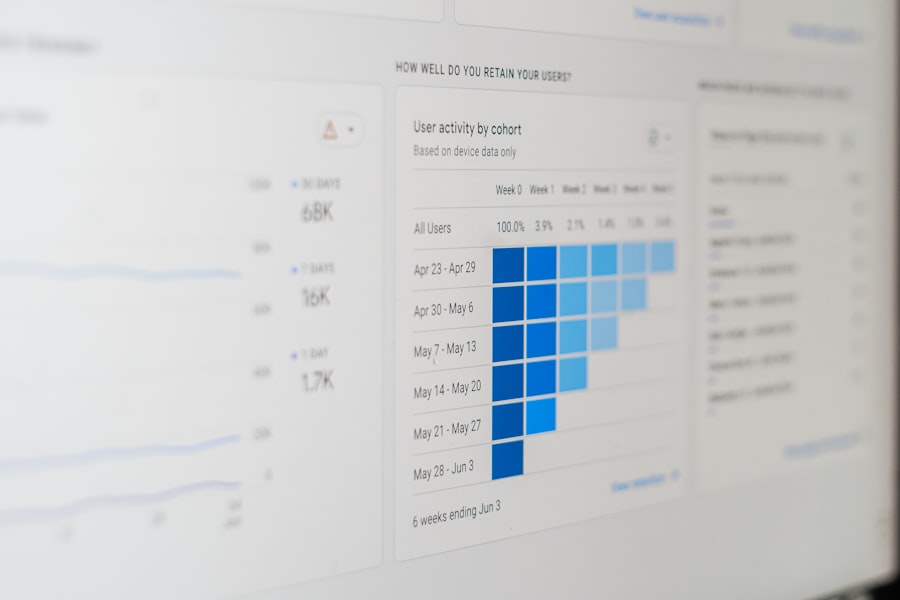To effectively market a product or service, it is imperative to have a deep understanding of the target audience. This involves not only identifying who they are but also delving into their preferences, behaviors, and pain points. Demographic factors such as age, gender, income level, and education can provide a foundational understanding of the audience.
However, psychographic factors—such as values, interests, and lifestyle choices—are equally important. For instance, a brand targeting millennials may focus on sustainability and social responsibility, while a luxury brand may emphasize exclusivity and high-quality craftsmanship. Moreover, understanding the target audience extends to recognizing their buying journey.
This journey typically includes stages such as awareness, consideration, and decision-making. By mapping out this journey, marketers can tailor their messaging and content to address the specific needs and concerns of the audience at each stage. For example, during the awareness stage, informative blog posts or social media content that educates potential customers about a problem can be effective.
In contrast, during the decision-making phase, detailed product comparisons or testimonials can help sway the audience toward making a purchase.
Key Takeaways
- Understanding your target audience is crucial for effective marketing strategies
- Data analytics can provide valuable insights for making informed business decisions
- Compelling and engaging content is essential for capturing and retaining audience attention
- Social media platforms offer a powerful way to increase brand awareness and reach a wider audience
- Implementing SEO techniques can significantly improve your website’s visibility and traffic
Utilizing Data Analytics for Decision Making
In the digital age, data analytics has become an indispensable tool for marketers seeking to make informed decisions. By leveraging data analytics, businesses can gain insights into customer behavior, market trends, and campaign performance. For instance, web analytics tools like Google Analytics allow marketers to track user interactions on their websites, providing valuable information about which pages are most visited, how long users stay on the site, and where they drop off in the conversion funnel.
This data can inform website design improvements or content strategy adjustments. Furthermore, predictive analytics can help businesses anticipate future trends based on historical data. By analyzing past purchasing behaviors and market conditions, companies can forecast demand for products or services and adjust their inventory or marketing strategies accordingly.
For example, a retail brand might analyze seasonal sales data to determine which products are likely to be popular during the upcoming holiday season, allowing them to optimize their marketing efforts and stock levels in advance.
Creating Compelling and Engaging Content
Content is at the heart of any successful marketing strategy. Creating compelling and engaging content requires a blend of creativity and strategic thinking. Marketers must not only produce high-quality content but also ensure that it resonates with their target audience.
This involves understanding what types of content—such as blog posts, videos, infographics, or podcasts—are most appealing to the audience. For instance, younger audiences may prefer short-form video content on platforms like TikTok or Instagram Reels, while professionals may gravitate toward in-depth articles or whitepapers. Moreover, storytelling plays a crucial role in content creation.
By weaving narratives that connect emotionally with the audience, brands can foster a deeper relationship with their customers. For example, a nonprofit organization might share stories of individuals whose lives have been positively impacted by their work, thereby inspiring potential donors to contribute. Additionally, incorporating user-generated content can enhance engagement by showcasing real customers’ experiences with the brand, further building trust and authenticity.
Leveraging Social Media Platforms for Brand Awareness
Social media platforms have revolutionized the way brands interact with their audiences. With billions of users worldwide, platforms like Facebook, Instagram, Twitter, and LinkedIn offer unparalleled opportunities for brand awareness and engagement. To effectively leverage these platforms, brands must develop a clear social media strategy that aligns with their overall marketing goals.
This includes identifying which platforms are most relevant to their target audience and tailoring content accordingly. Engagement is key on social media; brands should actively interact with their followers by responding to comments, sharing user-generated content, and participating in conversations relevant to their industry. For instance, a beauty brand might host live Q&A sessions on Instagram to address customer queries about skincare routines or product ingredients.
Additionally, utilizing paid advertising options on social media can amplify reach and target specific demographics more effectively than organic posts alone.
Implementing Search Engine Optimization (SEO) Techniques
Search Engine Optimization (SEO) is a critical component of digital marketing that focuses on improving a website’s visibility in search engine results pages (SERPs). By implementing effective SEO techniques, businesses can attract organic traffic and enhance their online presence. This process begins with keyword research to identify relevant terms and phrases that potential customers are searching for.
Tools like Google Keyword Planner or SEMrush can assist marketers in discovering high-volume keywords that align with their content strategy. On-page SEO techniques involve optimizing individual web pages to rank higher in search results. This includes optimizing title tags, meta descriptions, header tags, and ensuring that content is structured logically with appropriate use of keywords.
Additionally, off-page SEO strategies such as building backlinks from reputable websites can significantly enhance a site’s authority and credibility in the eyes of search engines. For example, a travel blog might collaborate with other travel influencers to create guest posts that link back to their site, thereby improving their SEO ranking.
Investing in Pay-Per-Click (PPC) Advertising
Pay-Per-Click (PPC) advertising is a powerful tool for driving targeted traffic to a website quickly. Unlike organic search strategies that take time to yield results, PPC campaigns can generate immediate visibility on search engines and social media platforms. Advertisers bid on keywords relevant to their business; when users search for those terms, ads appear at the top of the search results or within social media feeds.
This model allows businesses to reach potential customers actively searching for their products or services. Effective PPC campaigns require careful planning and ongoing optimization. Marketers must create compelling ad copy that captures attention while ensuring that landing pages are optimized for conversions.
A/B testing different ad variations can help identify which messages resonate best with the audience. Additionally, utilizing retargeting strategies can keep the brand top-of-mind for users who have previously interacted with the website but did not convert initially.
Utilizing Email Marketing for Customer Retention
Email marketing remains one of the most effective channels for customer retention and engagement. By building an email list of interested subscribers, businesses can communicate directly with their audience and nurture relationships over time. Personalized email campaigns that cater to individual preferences and behaviors can significantly enhance engagement rates.
For instance, an e-commerce brand might send tailored product recommendations based on previous purchases or browsing history. Moreover, email marketing can be used to re-engage inactive customers through targeted campaigns designed to win them back. Offering exclusive discounts or highlighting new product launches can entice former customers to return.
Additionally, regular newsletters that provide valuable content—such as industry insights or tips—can keep subscribers engaged and informed about the brand’s offerings.
Implementing Conversion Rate Optimization (CRO) Strategies
Conversion Rate Optimization (CRO) focuses on improving the percentage of website visitors who take desired actions—such as making a purchase or signing up for a newsletter. To implement effective CRO strategies, businesses must analyze user behavior through tools like heatmaps or session recordings to identify areas where users may be dropping off in the conversion funnel. Understanding these pain points allows marketers to make data-driven adjustments to enhance user experience.
A/B testing is a fundamental aspect of CRO; by comparing two versions of a webpage or landing page, marketers can determine which design elements or calls-to-action yield better conversion rates. For example, changing the color of a call-to-action button from green to orange may lead to increased clicks if it stands out more against the background. Additionally, simplifying forms by reducing the number of fields required can lower friction during the conversion process.
Incorporating Influencer Marketing into Your Strategy
Influencer marketing has gained significant traction as brands seek authentic ways to connect with their audiences. Collaborating with influencers who align with the brand’s values allows businesses to tap into established communities and gain credibility through trusted voices. The key is selecting influencers whose followers match the target demographic; this ensures that marketing messages reach an engaged audience likely to convert.
Influencer partnerships can take various forms—from sponsored posts on social media to long-term collaborations involving product placements or co-created content. For instance, a fitness brand might partner with a well-known fitness influencer to showcase its products through workout videos or challenges on Instagram. This not only increases brand visibility but also fosters trust among potential customers who see someone they admire using the product.
Utilizing Marketing Automation Tools
Marketing automation tools streamline repetitive tasks and enhance efficiency in executing marketing campaigns. These tools allow businesses to automate processes such as email marketing campaigns, social media posting schedules, lead nurturing workflows, and customer segmentation based on behavior or demographics. By automating these tasks, marketers can focus more on strategy and creative aspects rather than getting bogged down by manual processes.
For example, an e-commerce company might use marketing automation software to send personalized follow-up emails after a purchase, encouraging customers to leave reviews or explore related products based on their previous purchases. Additionally, automation tools can help track customer interactions across multiple channels, providing valuable insights into customer journeys and enabling more targeted marketing efforts.
Measuring and Analyzing Key Performance Indicators (KPIs)
To gauge the effectiveness of marketing strategies and campaigns, measuring and analyzing Key Performance Indicators (KPIs) is essential. KPIs provide quantifiable metrics that reflect how well marketing efforts align with business objectives. Common KPIs include website traffic, conversion rates, customer acquisition costs (CAC), return on investment (ROI), and customer lifetime value (CLV).
By regularly monitoring these metrics, businesses can identify trends and make data-driven decisions to optimize their marketing strategies further. For instance, if a particular campaign shows low conversion rates despite high traffic levels, it may indicate issues with landing page design or messaging that need addressing. Conversely, high engagement rates on social media could signal successful content strategies worth expanding upon in future campaigns.
In conclusion, understanding your target audience is foundational for effective marketing strategies that leverage data analytics for informed decision-making while creating engaging content across various platforms like social media and email marketing. Implementing SEO techniques alongside PPC advertising enhances visibility while CRO strategies optimize conversions effectively; influencer marketing adds authenticity while automation tools streamline processes—all measured through KPIs for continuous improvement in achieving business goals.
If you are looking to enhance your digital marketing strategies, you may want to check out this article on uprankerz.com. This article provides valuable insights and tips on how to effectively utilize social media, SEO, and other digital marketing tools to boost your online presence and reach your target audience. By incorporating the strategies outlined in this article, you can take your digital marketing efforts to the next level and achieve greater success in today’s competitive online landscape.


